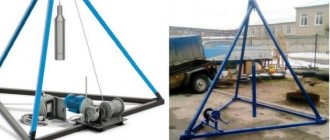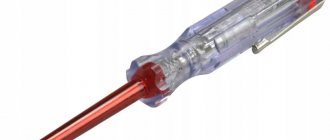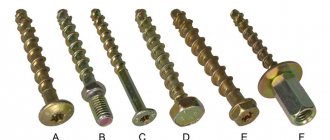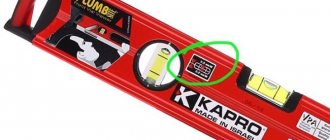Jigsaw cutting is a labor-intensive, creative and at the same time technically complex process for creating practical or simply beautiful things with patterns and amazing contours. Craftsmen can even make window frames or openwork jewelry boxes using a jigsaw and ordinary plywood. A lamp, a vase, a pincushion, a phone stand - you can cut out almost anything, the main thing is to prepare properly and have patience.
The process of cutting with a jigsaw Source pinimg.com
Kinds
Depending on the area of application, jigsaws are divided into two main classes - household and professional. Regardless of the type, the design of the tool is equipped with a saw mounted in a special frame.
For home use, small devices for cutting materials are used. These jigsaws can be manually or electrically controlled. Each type of tool has its own technical and design characteristics.
Manual
This tool is of the simplest type. It consists of a frame, a saw blade with clamps and a handle. A manual jigsaw is used mainly for small jobs that require a certain precision of cutting.
The bottom tool allows you to perform artistic cutting of the material. But using it requires patience and skill. The sawing speed of a manual device is low, so it is not practical to use it for large volumes.
Electric
A jigsaw powered by an electrical network is considered the most convenient tool. It allows you to quickly and efficiently cut any material. The depth of the cut mainly depends on the power of the device. For modern devices, this figure can range from 200 to 900 watts.
Electric jigsaw 620 Watt
Low-power jigsaws are suitable for household use. They have a relatively low cost and do an excellent job of sawing wood products up to a depth of 50 millimeters, and metal ones - 23 millimeters. More complex work requires the use of tools with the highest technical parameters.
Everything seems to be clear. Although no, what about files?
We talked about the types and functional features of files for a manual jigsaw separately in this article.
Despite the abundance of electric jigsaws, manual versions of this tool are still in trend. A hand jigsaw for wood is both a good physical activity for the entire shoulder joint, and an increase in the level of your woodworking skills, and the opportunity to do what you love in any conditions.
Nuances of an electric jigsaw
Modern manufacturers produce various models of jigsaws. The design of any type of tool consists of the following basic elements:
- Cutting blade. All electric jigsaws are equipped with a special file, which is used to cut the material. The processing process is carried out due to the rapid reciprocating movements of the cutting element. Moreover, depending on the model, the device makes from 43 to 58 revolutions per second.
- Support sole. This design detail ensures cutting accuracy. For most manufactured electric jigsaws, the guide plane rotates at any convenient angle up to 45 degrees. Some models have a fixed slope value.
- Engine. An electric tool is necessarily equipped with a special driving system that drives the rotating mechanism. The greater the power of the device, the higher its operational capabilities.
- Holder. This element allows you to keep the tool in the correct position during the entire working process.
Some models of electric jigsaws have additional equipment. This could be a backlight or devices for automatic chip removal. Many tools have cut regulators, which make it possible to independently set the rotation speed of the cutting element for each individual type of material being processed.
Choosing a jigsaw
We talked in detail about how to choose a jigsaw, how they differ and what to pay attention to in a separate article. Let us briefly repeat the main points.
The power of a jigsaw affects its performance. The more power, the thicker the workpieces it can handle, and the faster the work.
Adjusting the speed of the electric motor and pumping up the blade is absolutely necessary if you work not only with soft wood, but also with other materials.
For one-time, simple work, any jigsaw model will do. But in general, the statement “more expensive is better” is true for jigsaws.
General rules and operating features
The quality of cutting products with both a manual and electric jigsaw depends on its correct use. Each type of tool has its own operational characteristics that should be taken into account during the work process.
Hand jigsaw
There are several points to consider when cutting material with a simple jigsaw:
- All movements of the tool must be vertical. The jigsaw should be held straight, otherwise the saw will quickly deteriorate, and the cutting process itself will be somewhat delayed. Movements are performed in only two directions - up and down.
- Do not press hard on the tool. Excessive force can significantly reduce the quality of the cut. You need to lower the jigsaw with gentle and light pressure, and when lifting it, it is recommended to be completely free.
- When cutting out a design, only the blade is rotated. The jigsaw should remain in its original position. In this case, it is necessary to hold the tool with one hand, and with the other to ensure the rotation of the material according to the intended sketch.
The manual jigsaw should not be pressed too hard.
It is recommended to place the cutting blade at the edge of the cutting line. This will ensure the accuracy of cutting curly lines.
Electrically controlled jigsaw
Using a jigsaw requires compliance with its own rules, which will help you cut the material efficiently:
- To put the tool into action, you need to connect it to the network and press the start button.
- Always press the support plate against the material while cutting. This will allow you to cut the canvas exactly along the intended line.
- The support bar must always be perpendicular to the material being processed. Incorrect placement of the guide sole can lead to damage to the product and the cutting element itself.
- When cutting the fabric into shapes, you should use a minimum of effort. Any excessive pressure on the tool can damage the workpiece.
- If it is necessary to make cuts at an angle, you must first adjust the support sole.
- When working with an electric jigsaw, you should take short breaks of ten minutes every half hour. This action will help protect the device from overheating and will greatly extend its service life.
When using an electric tool for the first time, you should set the speed to low. This will allow you to feel how the jigsaw works and get used to it.
Need some advice on why the file is sticking?
You have gotten a good feel for the jigsaw, have achieved smooth movement and are maintaining a neat cutting line, but then the movement of the tool becomes difficult and the file jams in the workpiece. This is a typical situation that arises when carving plywood with a hand jigsaw. It happens for the following reasons:
- Overheating of the file - during prolonged use, the blade expands due to heating. To avoid such situations, take short breaks or periodically wipe the canvas with a damp cloth.
- Features of wooden blanks. The movement of the jigsaw may be difficult due to the fact that the file has run into a denser area: a knot, a lump of glue in plywood, etc.
- On long cuts, the saw blade can become pinched between two nearly separated pieces of plywood. You can continue sawing comfortably by pinning the separated ends together with a clothespin.
Electric jigsaw technology
Using a jigsaw, you can cut through various materials without much effort. But still, the quality of work requires a special approach to each type of canvas.
Selection and preparation of material sheet
A jigsaw can be used to cut blades of varying densities. The material for cutting can be wood products, plastic or tiles. You can also cut metal using a power tool.
Workpieces for sawing must have a homogeneous structure. If wood panels are used, the presence of knots or metal elements such as staples, nails or screws should be excluded. Wood blanks are used for cutting only in dried form. To cut out a design, it is recommended to select a material with a flat surface.
The canvas selected for processing is fixed in a horizontal position. Cutting lines are drawn on its surface using a pencil.
Cutting down a tree
To work with wood materials, special files with fairly large teeth are installed in the tool - from 2 to 6 millimeters. The more complex the shape of the cut, the smaller their size should be.
Straight cutting of wooden panels can be carried out at the highest speeds. For more precise cutting of products, the rotation speed of the cutting element can be reduced.
To work with wood, you will need files with large teeth.
To increase the speed of material processing, it is recommended to turn on the pendulum stroke. It is used if the quality of the cut is not particularly important.
You should cut smoothly without much effort. During operation, the tool must be pressed evenly against the surface of the workpiece.
Metal processing
In this case, the cutting blade should have small teeth, the distance between which does not exceed 1-2 millimeters. During the process of sawing metal blades, the pendulum stroke is completely switched off. Material processing is performed at the lowest speed.
You need to move the jigsaw very slowly, avoiding any pressure on the tool. Before processing, the material is fixed so that the cut line is as close as possible to the support.
We cut plastic
A cutting blade for plastic workpieces is no different from a saw for metal. During the sawing process, the minimum position of the pendulum stroke is established. For smoother cuts, turn it off completely.
Plastic processing is performed at low speeds. The tool is pressed tightly against the blade and moves smoothly along its surface.
Sawing tiles
Such products require a special file with abrasive material applied in place of the teeth. In this case, the pendulum stroke is not used. The entire work process is carried out at the maximum set speed.
Cutting tiles with an electric jigsaw is used only when small cuts are necessary. This is due to the fact that saws deteriorate quickly and require frequent replacement.
Features of sawing
An electric jigsaw easily copes with straight-line sawing. Also, using the tool, you can make various cuts at an angle and cut an oval or circle in the workpiece. Each type of cut has its own characteristics.
Round and oval elements
The outline of the figure is applied to the prepared canvas. After this, using a drill, a hole is made in the workpiece into which the cutting element of the jigsaw is installed.
The cutting process begins and ends at the hole made. If you drill several holes, then a circle or oval can be cut out in parts.
Straight-line
An electric jigsaw is the easiest to handle this type of cut. Markings are made on the canvas along which the tool is smoothly guided.
For straight cutting of material, you can set the highest speed. It is recommended to secure the workpiece before starting work.
At an angle
Such cutting of the material is carried out by first installing the sole at the required degree of slope. After fixing the required angle, the same actions are performed as for straight cutting.
Sawing with a jigsaw at an angle
The nuances of straight cutting
To cut material in a straight line, a guide rail or rip fence is often used. Such additional devices greatly facilitate the work process and improve the quality of the cut.
Guide rail
This auxiliary device is a metal ruler containing a groove for installing a special sole and a jigsaw.
Before starting work, the material is marked. After that
Initially, the material is marked. After this, a tire is fixed along the line. The electric tool moves easily along the device, making precise and even cuts.
Rip fence
All models of electric jigsaws have a special hole in the support base for installing a special rip fence. The device can be purchased at a specialty store, but is often included with the tool.
The parallel fence ensures even cutting of various workpieces. But the use of such a device requires certain conditions:
- when moving the tool along the canvas, it is necessary to press the sole firmly enough;
- The surface on which the device will move must be absolutely flat.
The structure of the rip fence must be sufficiently strong and robust. Installing the device on devices that can move to the side when cutting is not recommended.
How to cut correctly
Before moving on to the cutting technique, we should say a few words about the workplace. Of course, you can work by simply pressing the plywood to the edge of the table or your knee, but it will be more effective to use a simple device called a “dovetail” (not to be confused with the type of connection). It is a regular rectangular surface with a wedge-shaped cutout, where a round hole is located in place of an acute angle. You can easily make such a platform yourself or ask the store where you purchased the jigsaw. The device is attached to the table with a clamp and makes sawing with a hand jigsaw much easier.
The most common breakdowns and methods for their prevention
High-quality jigsaws have a fairly long service life. But even the best models can suddenly fail. The most common tool parts that fail are:
- Start button. Basically, such a design element stops working when metal dust gets into the housing. To eliminate the problem, you need to perform simple cleaning using a special vacuum cleaner. With prolonged use of an electric jigsaw, the button fails as the mechanism wears out.
- Mechanical connections. Most often the rod gets damaged. This element is most affected by mechanical loads. The locking device, which is connected to the rod, often fails. This is all due to dust getting inside the housing while cutting various materials. But if the instrument has a high-quality body, then such problems practically do not arise.
- Engine. Stopping the electric driving mechanism can occur when the stator or rotor burns out. Also, sometimes the problem occurs due to wear on the notch on the shaft. In order for an electrical device to work long enough, its power should always be taken into account before setting certain tasks.
Improper use of the tool leads to high loads, and subsequently failure of the mechanism. When cutting for a long time, you should always periodically let the jigsaw cool down a little.
How to apply a design to a workpiece
Not everyone, even a creative person, can boast brilliant artistic skills. For some, cutting with a hand jigsaw itself is a much simpler task than drawing the outline of a future craft. Fortunately, applying a pattern to a surface can be done in several basic ways that are accessible to almost everyone. Transfer the outline of the model using carbon paper. You can find one in office supplies, at an average price of 150 rubles for a pack of 50 sheets, which is enough for several hundred crafts.
Glue the patterned paper with double-sided tape or glue. In the second case, after cutting, the glued paper will have to be removed with sandpaper. Double-sided tape, can be carefully peeled off.
Safety precautions
A jigsaw is one of the tools that is fairly easy to use. But still, the presence of a sufficiently sharp cutting element requires compliance with certain safety rules:
- Cutting any materials should be done on a flat, stable surface with the blade first secured. In this case, cutting parts in midair is completely eliminated.
- The workpieces should be cut at a distance of at least 40 centimeters from the eyes. For protection, it is recommended to use special glasses.
- Before work, you should make sure that the file and other parts adjacent to it are firmly fixed.
- Before connecting the jigsaw to the network, you must check the integrity of the electrical cable.
- The handle of the cutting device must be securely fastened. Otherwise, the tool may slip and cause injury.
When cutting workpieces from various materials, you should always take into account the technical capabilities of the tool. Proper use of a jigsaw and compliance with all safety rules during its operation will allow you to cut any part according to the intended sketch without any problems.











